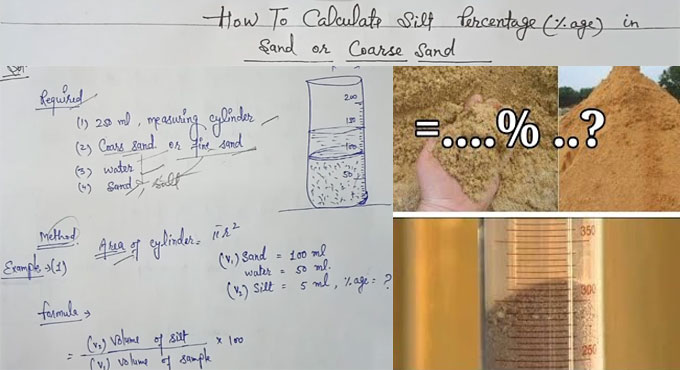
How to measure the volume of silt content in sand

In this civil engineering video tutorial, you will learn some vital tips to work out silt percentage in sand or course sand to ensure that whether the sand is eligible to be used in concrete or not. It is recommended that the percentage of silt content of sand in concrete should be over 6%.
The silt stands for a very fine particle and the size of it is under 150 Microns. Silt content can be shrinked and inflated because of the weather condition. Therefore, it can impact the strength of the structure.
Impacts of Silt:
1. Crack will be created on concrete. (some cracks are found in the wall)
2. Silt content includes evaporated matters and salts. (mortar will be exposed at the time of plastering)
3. It engrosses more water. (broadened & shrink owing to the weather condition.
To determine the percentage of silt conent, the following items will be required :-
a. 250 ml, measuring cylinder
b. Course or fine sand
c. Water
d. Sand
The calculation is done as follow - Initially, it is required to area of cylinder as the cross sectional area from top to bottom will be same for the cylinder.
Area of cylinder = pr2 x Height
Suppose, the cylinder is filled with sand up to 100 ml, then water is added up to 50 ml. So, total volume will be 150 ml. Then, shake the bottle and wait for 2 hours. Now, it is found that the percentage of silt content in the sand is 5 ml. You can check the percentage of silt content in the following way :-
= Volume of silt (taken as V2) / Volume of sample (sand or course sand; taken as V1) x 100
= 5 / 100 x 100 = 5%
To get more information, watch the following video tutorial.
Video Source: CE&T-Civil Engg & Technology


